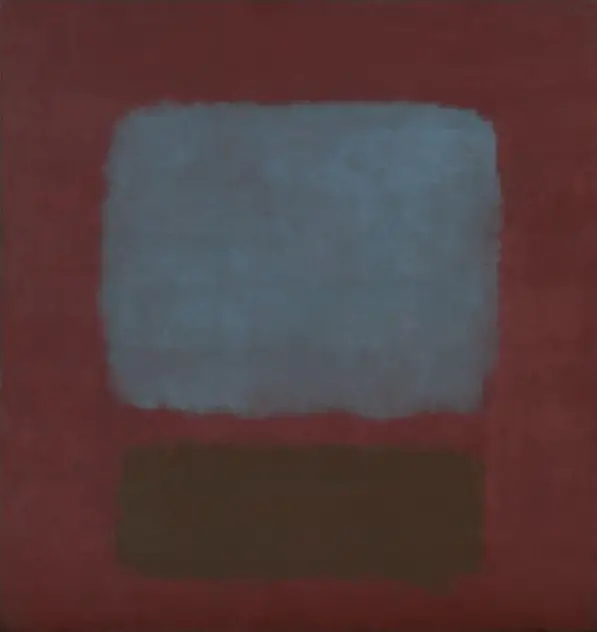This work was done by the application of thin washes of oil plant to come up with a distinctive method of achieving luminosity. It was another art by the Latvian Jewish descent to present a diversity of emotions in the viewer. As one of his colour blocking paints, it has a variety of themes which is in the concept of form and architecture. It expresses a non-representational statement with colour, line and size that generates an art of pure thought and emotion.
Today Slate Blue and Brown on Plum is among Rothko’s paints of the modern expression of thoughts aligned with all sorts of feelings. His choices of colour had theories on the emotions as everything is well planned according to the creation. This made the observer focus on the inner light. This abstract style embedded in the active relationship of the viewer to the painting. After Rothko's radical change to do the design of the abstract painting, he was greatly influenced by an abstract artist Clyfford Still due to their new friendship. Matisse also impacted him on how to use deep colours boldly on paint which could saturate you. Furthermore, philosophy played a major role as it made him determined his art had brimming ideas and content.
More of his artworks are Rothko Chapel, Slow Swirl at the Edge of the Sea, Blue, Green and Brown, No.61 Rust and Blue, Green Red on Orange and No.10. These are among his great work highlighted in his history of abstract artwork. He has achieved to be the greatest abstract painter of all time. Creating out most abstract artwork, he has much-influenced today's colour artists such as Daniella Schweinsberg, Anya Spielman and Richard Caldicott. They greatly benefited from his iconic colour field painting style. No. 37/No. 19 Slate Blue and Brown on Plum displays Rothko's idea on how viewers can access a larger sense and experience through colour. Consisting of regular and irregular patterns varieties of themes comes out with different explanations. With endless variations of colours, different moods and effects were achieved. It is for the observer to familiarize their world, how they feel and how it is connected to the art.

